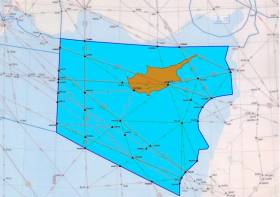Displaying items by tag: SafeTrx
Irish Vessel Tracking App Launches In Cyprus
#SafeTrx - Irish-developed vessel tracking app SafeTrx has had its latest international launch in Cyprus.
Originally unveiled by Irish Sailing in 2013, the smartphone app makes it easy for boats to allow contacts on shore to monitor their voyages for safety.
The service has since been further developed in co-operation with SAR professionals around the world and is already in use in the UK, Finland, Norway, Germany, the Netherlands, Spain, South Africa and Australia.
Now the Cypriot Government’s Joint Rescue Coordination Centre (JRCC) in Larnaca joins the list, operating and managing the rollout of SafeTrx for the eastern Mediterranean.
It’s hoped that the Cypriot version of the app — available for iOS and Android as CyJRCCSfTrx — will help reduce loss of life at sea and reduce SAR response times.
The new app includes a further enhancement to SafeTrx’s intelligent alerting system.
In areas of poor coverage, the location of a caller in distress can now be sent via SMS to the JRCC, in addition to the standard high priority SafeTrx data message.
This method was added following offshore testing in Cyprus, and it ensures that the JRCC has the location details when they receive the call, allowing quicker response times.
John Murphy, CEO of SafeTrx developer 8 West Consulting, said: “We welcome the Republic of Cyprus’ JRCC as a new customer and are delighted that their experience and knowledge is coming to the SafeTrx User Group.
“Our recent SafeTrx User Group meeting gathered representatives from many national licensees of SafeTrx in Holland to discuss 2018 developments and the experience of the JRCC in Mediterranean search and rescue of different types will be a valuable enhancement going in to the future.”
As always, Afloat.ie advises boaters and sailors to stick to a standard safety checklist, which includes informing a contact on shore of your plans and expected return time, and confirming that you have adequate means for calling for help - from a suitable VHF radio to flares for signalling distress.
ISA SafeTrx System Paused For Upgrade Tomorrow
#SafeTrx - Users of the ISA's SafeTrx app are advices that the system will be unavailable tomorrow morning and afternoon (Tuesday 15 September) for an upgrade.
During the planned upgrade from 6am to 3pm, the SafeTrx apps for iOS and Android, as well as the ISA SafeTrx Boater website, will be unavailable.
Following the upgrade, a new version of the app will be available to download for your smartphone, with older versions no longer functioning after tomorrow.
CoastalBoating.net details the changes boaters can expect from the updated SafeTrx app, including a new emergency call feature.























